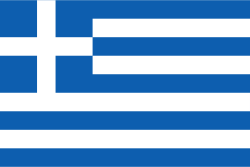Paros Cyclades Greece | Send flowers
Delivery of fresh flowers and plants to all the Cyclades. Bouquets for birthdays and celebrations at the best quality and price on the market. Holidays and roses to your loved ones, no matter how far away you are. Paroikia and Naousa flower delivery
116 Results
Show filters
Sort:
Price
0 € - 50 €
50 € - 100 €
100 € - 200 €
200 € +
Color
Red
White
Colorful
Pink
Green
Fuchsia
Purple
Blue
Yellow
Cream
Orange
Lilac
Bicolor
Containers
Ceramic
Glass
Basket
Wooden
Flowers
Roses
Chrysanthemums
Gerberas
Lillies
Anthurium flowers
Alstroemerias
Amaryllis
Mixed flowers
Sunflowers
Irises
Gifts
Gifts for her
Balloons
Champagnes
Chocolates
Arrangements with drinks
Gifts for children
Gifts for him
Teddy bears
Occasion
Anniversary
Apology
Birthday
Business gift
Christening
Congratulations
Easter
Engagement
Father's day
Funeral
Get well soon
Just because
Mother's day
Name day
New year
Newborn baby boy
Newborn baby girl
Opening
Love and romance
Surprise
Thank you
Valentine's day
Wedding
Woman's day
Christmas
Plants
Flowering plants
Green plants
Outdoor plants
Indoor plants
Plant arrangements
Orchid plants
Dracaena
Φυτά Χριστουγέννων
Poinsettia plant
Bonsai
Seasons
Seasonal flowers
Winter flower
Autumn flowers
Spring flowers
Summer flowers
Paros, is an authentic Cycladic island full of sights and history of 4000 years. It is a popular destination, ideal for any kind of vacation. Its natural beauty, its picturesque landscapes, its crystal clear waters and its hospitable inhabitants make it one of the most popular summer destinations.
Paros is the island of the Cyclades that combines tradition with modern ways of entertainment. The picturesque taverns and the quiet beaches coexist harmoniously with the noisy bars and beach bars.
Parikia, the capital of the island, is the place where you will find dozens of options for food and nightlife. Walk in the alleys of Parikia around the ruins of the Frankish castle and admire its beautiful mansions, get to know the rich archaeological history of Paros and visit the majestic Byzantine churches and monasteries with Cycladic architecture.
Second city in size, is Naoussa, the cosmopolitan fishing village, one of the most beautiful ports in the Aegean.
Very important for Paros are its vibrant, picturesque villages. The largest villages are Lefkes, Marpissa, Piso Livadi, Marmara, Prodromos, Kostos, Dryos, Aggaria and Alyki.
Beaches
Paros is also famous for its beaches as it has beaches for all tastes. From organized with loud music and the possibility for water sports, to family and secluded beaches ideal for a relaxing holiday.
Kolimbithres with its round rocks, Langeri with its incredibly transparent waters and Santa Maria with its golden sand are among the top choices. Lolantonis, Glyfa and Faraga, Delfini, Parasporos, Krios, Marcelo, Agios Fokas, are some of the beautiful beaches that attract many people.
Churches
Paros is characterized by white churches, chapels and monasteries. They were built mainly in the period of the 16th - 17th century at a time when Paros is experiencing great prosperity. During the Turkish occupation, there were about 35 monasteries in Paros. Today, five remain in operation.
In Parikia, a short distance from the port is the sacred jewel of Paros and one of the most important early Christian monuments in Greece, the church of Panagia Ekatontapyliani (4th century).
The complex consists of the church of Panagia, the basilica of Agios Nikolaos, the church of Agia Theodosia, the chapel of Agios Dimitrios, the cells that protected it as a fortification, and the Baptistery. The Baptistery of Ekatontapyliani is the oldest and best preserved in the entire Orthodox East and very often today baptisms are performed in it.
Ancient Quarries of Paros
The history of Paros in marble dates back to the Early Cycladic period and continues to this day. The quality of its marble was known everywhere due to its clarity and transparency, since the light reaches a depth of up to seven centimetres. It is no coincidence that some of the most famous statues have been made with this marble, such as Aphrodite of Milos, Hermes of Praxiteles, the Daughters of the Acropolis and the Victory of Samothrace, but also famous temples like that of Apollo at Delphi and he of Zeus in Olympia. The quarries of Paros are among the few in the world with double mining, since on the one hand the "white stone" was extracted from the open air, suitable for the construction of temples and buildings; on the other hand the transparent marble of the statue was mined from the underground galleries.
Cycladic architecture
The buildings of Paros have the simple beauty of the Cycladic landscape and are adapted to the daily needs of the inhabitants. The Cycladic houses are ground floor or two-storey, with a stone external staircase, simple, without ornaments, with few openings, in a charming colour contrast of white with the vivid colours on doors, windows and balconies (usually deep blue of the sea). The roof is sometimes flat and sometimes vaulted.
Characteristic of the Cycladic settlements are the stone, usually whitewashed windmills, which testify to the toil of the inhabitants of the past.





